At A Glance
Challenge
To create casing parts for the Sooma Duo device - a portable therapeutic brain stimulation for the treatment of depression.
Solution
The Sooma Medical team approached Protolabs for their support through automated Design for Manufacturability and in-person collaboration during the tooling process to create the injection moulded parts needed.
Outcome
Four casing parts were injection moulded, abiding by ISO 10993 for biocompatibility and UL-94 for flammability whilst maintaining the high-quality finish expected by the patient user.
The collaboration between Protolabs and Finland-based Sooma comes at an exciting time, with Sooma successfully raising €5m in funding. This latest investment round for the medical device start-up, alongside the rapid product development of the Sooma Duo, places Sooma favourably - readying itself to sweep across American and the remainder of European markets.
Affecting an estimated 300 million people worldwide, depression is a common mental health condition that anyone could develop. Treatments vary, from the therapeutic to the medicinal, but evolving the way treatments are delivered is an important factor in the efficiency of administration and, more importantly, the improvement of patient outcomes.
This case study explains why the Sooma Duo is a groundbreaking device for depression treatment, and it describes how engineering, product development, and collaboration between teams led to such an effective tool for clinicians in the field.
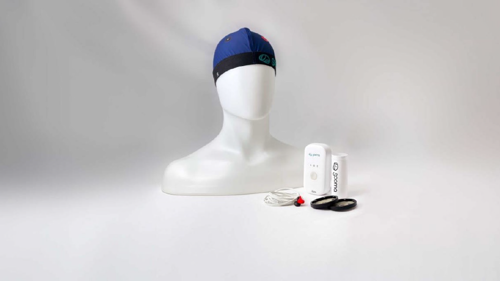
“The Protolabs platform is a state-of-the-art solution to address the most critical questions regarding project deliverables, such as cost, schedule, and output.”
Johannes Österberg, Supply Chain Manager, Sooma Medical
Finnish medical device company Sooma Medical specialises in non-invasive brain stimulation devices for neurological and psychiatric disorders. Their dedication to research and clinical validation has led to collaborations with prestigious research and healthcare institutions to conduct rigorous studies on the safety, efficacy, and long-term benefits of their therapies. Sooma therapies are delivered for the treatment of major depressive disorder (MDD) and chronic pain, with a primary focus on depression.
Managing depression with electrical signaling
Brain function depends on electrical signaling, so when people experience depression, the signaling becomes imbalanced in certain regions of the brain. These regions are found in the dorsolateral prefrontal cortex (DLPFC), with studies suggesting that depressed patients experience reduced signaling in the left DLPFC and increased signaling in the right DLPFC.
Sooma Depression Therapy specifically targets these areas to relieve depression by administering a mild current through two electrodes inside a head cap. The system – the Sooma Duo device - increases activity near the left electrode while reducing the activity near the right electrode. This process – typically lasting 30 minutes per session - can help to restore the balance between these two brain areas and can result in reduced depressive symptoms.
The device is described as ‘a portable therapeutic brain stimulation’. It is one part of an at-home treatment system comprised of the stimulator itself, a patient mobile app, and a clinician platform. These three components work together to create a safe and effective therapeutic solution that is easy for patients to administer with full clinician control and monitoring.
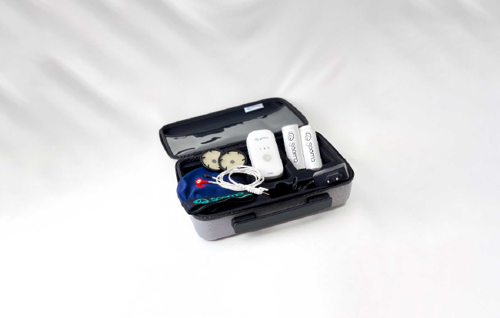
Neil Lunka, Marketing Manager at Sooma Medical explained further: “By offering portable, clinician-monitored devices, we are revolutionizing depression treatment by allowing advanced brain stimulation therapies to be prescribed in a similar fashion to traditional antidepressants.
“The Sooma Duo allows clinicians to manage, measure, and optimize treatments at a distance and at any scale. Previous devices allowed for at-home patient-administered treatments, but this was similar to pharmaceuticals in that a clinician would prescribe the therapy, and it would be up to the patient to schedule treatments and self-report adherence.
“This latest product puts the oversight back into the hands of the clinician by allowing the prescribing physician to schedule treatments for the patient's device that are limited to their preferred dates. Each treatment is logged to give the clinician full visibility on when the treatment was taken, if there were any disruptions in the session, and the dosage received.”
This is a groundbreaking device for the managed treatment of depression through electrical signaling.
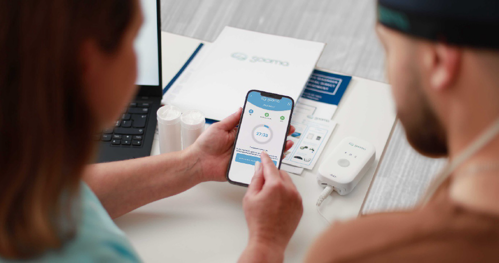
“During the design phase there are typically lots of changes happening, but Protolabs helped provide an accelerated path to handle these changes.”
Johannes Österberg, Supply Chain Manager, Sooma Medical
When Protolabs came on board
The design process for the Sooma Duo device was led by Sooma's internal cross-functional team, from research and concept to design R&D. A collaboration with an external design house for the electronic and mechanical design aspects then followed. For the prototyping and manufacturing, Protolabs was the go-to partner as Sooma Medical had worked with the world-leading digital manufacturer previously.
Johannes Österberg, Supply Chain Manager at Sooma Medical described the partnership: “Protolabs was selected to accelerate the path for certification testing. We were in the design phase, so specific Protolabs services were key at this time: Design for Manufacturability (DFM), Mould Analysis, Mould Fabrication and First Article Inspections from the production mould. During the design phase, there are typically lots of changes happening, but Protolabs helped provide an accelerated path to handle these changes.”
First of all, as with many collaborations with Protolabs, the project partnership began with a CAD upload to the Protolabs quoting platform, which also serves as a vital manufacturability feedback tool for the injection moulded parts needed.
Johannes continued: “The Protolabs website and quoting platform are transparent, providing all the necessary information regarding technical details, timeline as well as cost. The platform is a state-of-the-art solution to address the most critical questions regarding project deliverables, such as cost, schedule, and output
“For the parts themselves – four altogether – these were for the device enclosure, which consisted of a number of different functional features. For example, the front cover has user interface features such as treatment indicator LEDs, and the back cover has safety features for the patient connector and a separate charging interface. Other important considerations for the enclosure parts were the need to interact with the human body (governed by standards ISO 10993 for biocompatibility) and to maintain safety according UL-94. The materials we ultimately use are safe for patients and clinicians.”
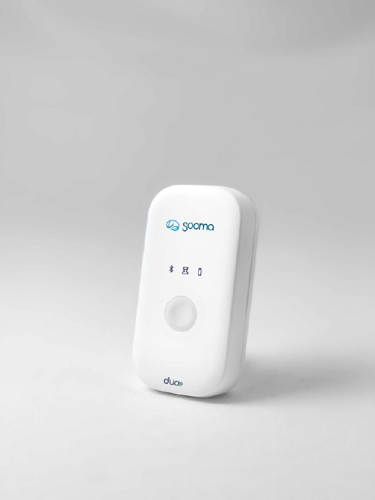
During the design process, a number of changes were needed but the challenging schedule was overcome with the partnership support of Protolabs. Sooma had designed the first version of the Sooma Duo, including its enclosure parts, plus they’d built the associated injection mould tooling. But during design verification, there were two changes needed to meet the ingress protection and patient connector standard requirements. These changes required new tooling to be made for the enclosure parts, so Protolabs immediately began resolving the issue with new rounds of design.
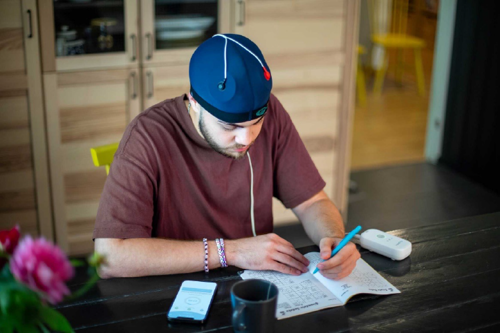
Following design verification, further obstacles were faced during injection moulding production of the new design. The DFM analysis for the certification changes required that the gate location be on the outer surface of the enclosure. As this is a surface visible to patients, it was problematic as a key element of medical device design is that the visual quality corresponds with the clinical quality of the treatment. Doing so helps reassure patients that they are in good hands. So, to ensure this patient confidence, the gate location needed very precise trimming. Protolabs resolved the issue by trialing different options and finally fine-tuning the process for the trimming to ensure first-class quality that was consistent from part to part and from batch to batch.
Johannes added: “Sooma and Protolabs have evolved as true partners in overcoming obstacles.”
The parts were delivered to Sooma quickly, ready for assembly and subsequent use.
Since gaining regulatory approval in Europe in 2014, the Sooma Duo remains Europe’s first and only MDR (Medical Device Regulation) certified tDCS (Transcranial Direct-Current Stimulation) device, and the company is looking to expand its market across the continent. Furthermore, the Sooma Duo has been granted a Breakthrough Device Designation from the FDA in the U.S. This means it can begin to run clinical trials right away, so the FDA’s ‘Designation’ also serves as the initial step to a future entry into the country’s market. All of this is supported by the latest funding round and the rapid product development of the device itself.
At the start of 2024, Sooma had around 20,000 patients globally. By the end of 2024, they intend to treat a further 10,000 patients. But with part of the €5m investment going towards clinical trials in the U.S., Sooma hopes to gain full FDA approval and begin selling the Sooma Duo there by the end of 2025.
Lunka concluded: “As we make our therapies available to clinicians in new markets around the world, we will continue to develop our safe and effective patient-centric therapies, offer powerful tools for clinicians battling a global mental health crisis, and provide hope to the millions of patients suffering from depression.

“The treatment system is already in routine clinical use in several clinics and university hospitals throughout Northern and Central Europe. Feedback from clinicians and patients has been very positive. Prescribing physicians have provided great feedback regarding the enhanced visibility and control over patient treatments, while patients have reported their appreciation for treatment reminders and guidance directly on their own mobile devices.”
Throughout the device’s development and manufacture, time was an extremely important factor, with Protolabs providing the support needed to meet the demanding schedules. Sooma and Protolabs have now established a long-term business partnership for the on-demand manufacturing of injection moulded parts for the Sooma Duo stimulator.
“Sooma and Protolabs have evolved as true partners in overcoming obstacles.”
Johannes Österberg, Supply Chain Manager, Sooma Medical











